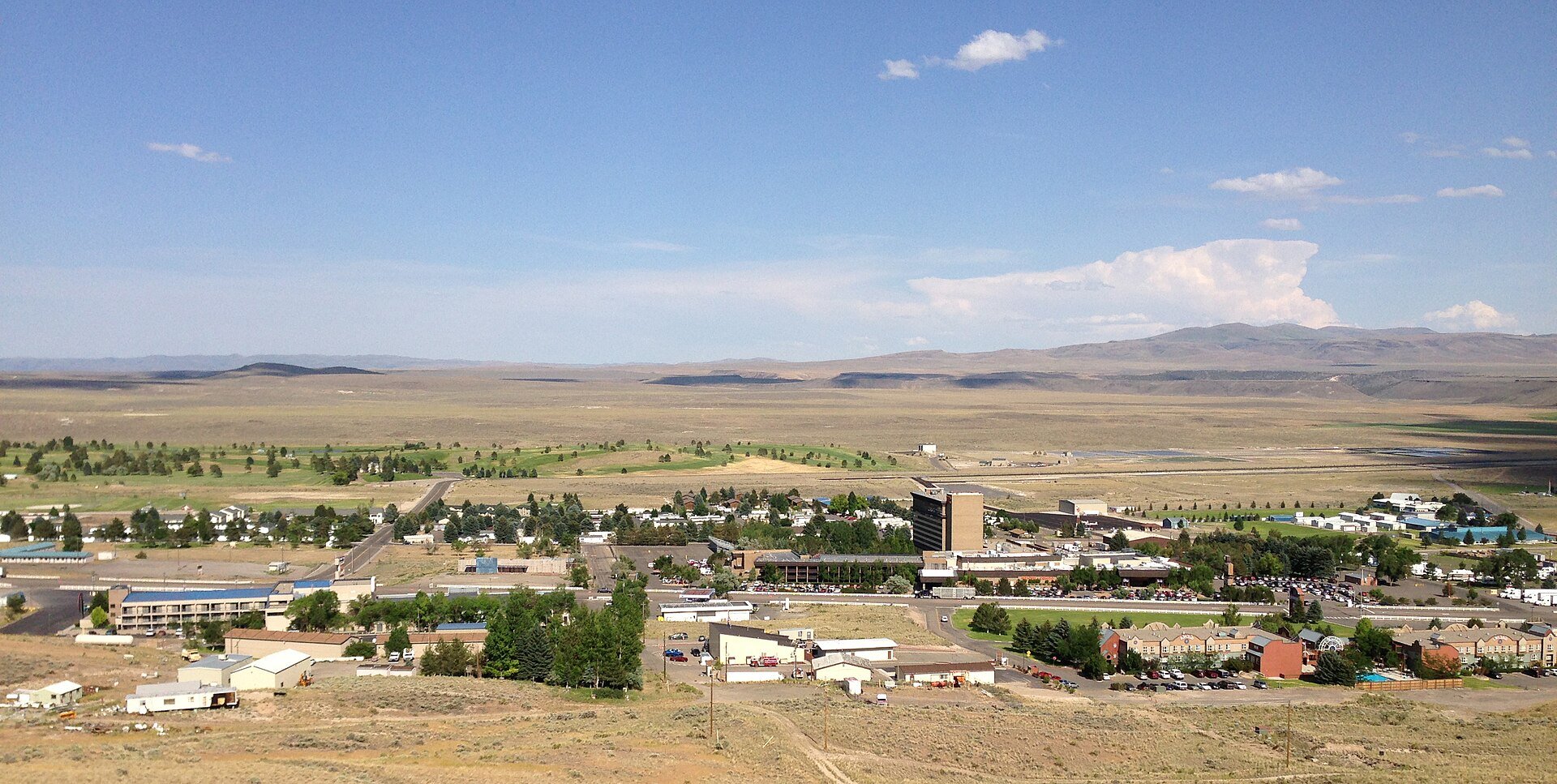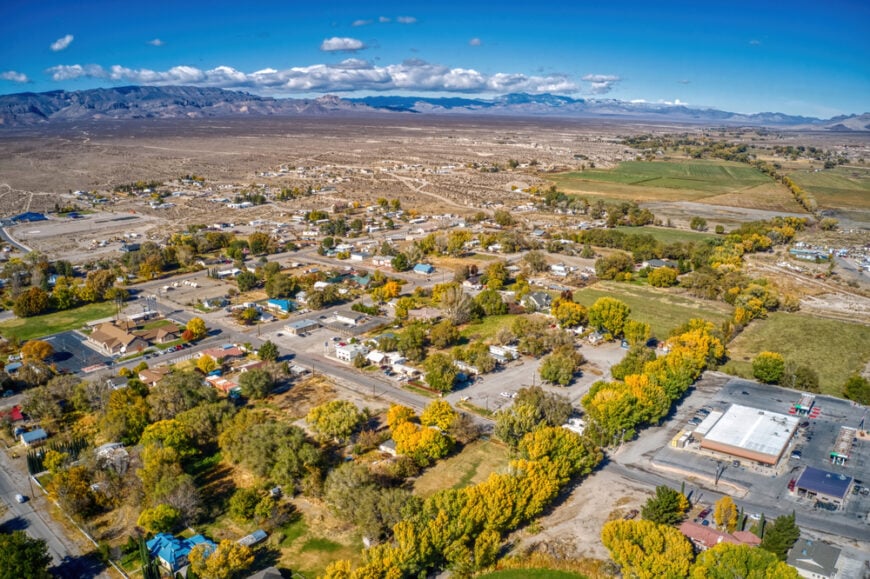
The southeast corner of Nevada spreads itself in quiet gestures: ridges of volcanic stone, long arroyos that gather light, and small towns folded into valleys like punctuation marks on an endless page. Caliente rises from the desert floor with a Spanish Mission–style railroad depot that feels more cathedral than station, still commanding its place as if trains might roll through any minute. Panaca carries a different rhythm, its fields and orchards pulling color into the dust, a rural patchwork set against cliffs that glow rust-red at dusk.
Cathedral Gorge, with its spires and slot canyons, looks like some sculptor’s fever dream baked in sun. Beyond it, the Virgin River pulls its slow course east, carving corridors of cottonwood and sand. The high meadows of the Great Basin, cooler and improbably green, open a door into a different season, a reminder that desert country always holds more than one story.
These towns are small, yet they pulse with their own calendars—fairs that fill the streets with chatter, rodeo weekends where dust and laughter rise together, evenings that belong to skywatchers who treat constellations like neighbors. History presses close here too: Paiute trails, Mormon homesteads, rail lines that once stitched the desert to the coast.
To step into this region is to feel distance not as emptiness but as presence, sharpened and clear. Each settlement claims its own space without hurry, letting the desert dictate pace, silence, and the shape of what endures.
25. Panaca – Cathedral Gorge’s Quiet Neighbor

Panaca feels like a village cupped in gentle hands, with fields and cottonwoods softening the edges of the high desert. Its seclusion comes from being far from interstates and ringed by public lands that keep growth at bay.
The vibe is calm and old-fashioned—porch talk at dusk, a courthouse lawn that still hosts bake sales, and stars bright enough to cast faint shadows. Spend a morning wandering the slot-like formations of Cathedral Gorge State Park, then cool off at Panaca’s old springs and grab pie from a no-frills café.
History lingers in pioneer fences and the tidy grid of streets, while ranch work and school jobs keep the week steady. When the wind hushes, you can hear the town breathe. It’s the kind of place that reminds you how quiet the world can be.
Where is Panaca?

Panaca sits in Lincoln County near the Utah border, about 15 miles north of Caliente along U.S. 93. The town rests on a broad bench above Meadow Valley Wash, with state parklands buffering it from through-traffic.
Most visitors approach on a two-lane highway that narrows as the basin opens wide. It’s close enough to reach in an afternoon, yet far enough that the first cricket you hear tells you you’ve arrived.
24. Caliente – Rainbow Canyon Rail Town
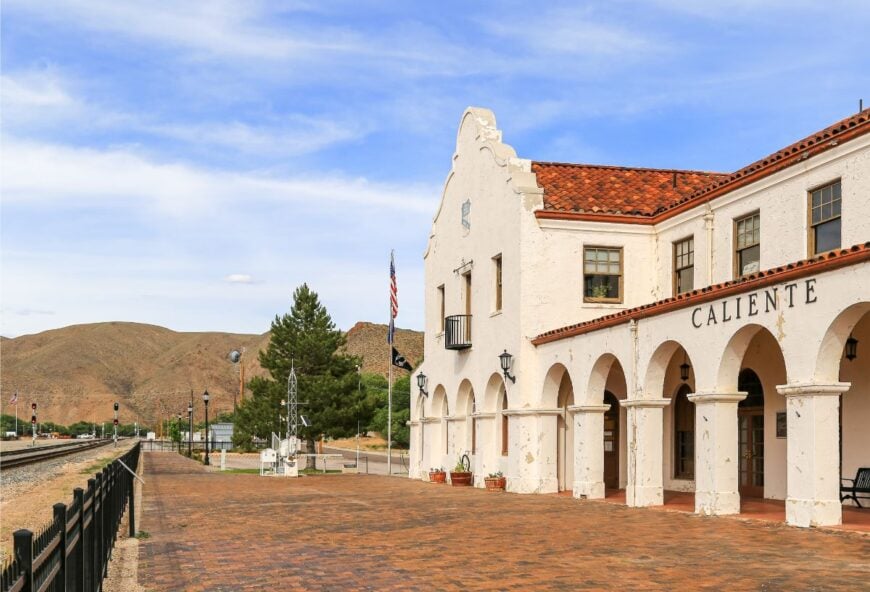
Caliente hides where cottonwoods trace the curve of Rainbow Canyon and a Spanish-style depot anchors Main Street. Its distance from any interstate and the steep canyon walls lend it a pocketed, away-from-it-all feel.
The mood is rail-town mellow: freight horns, café clatter, and the soft steam of mineral springs after dark. Hike the cool narrows of Kershaw-Ryan State Park, cruise the red-walled canyon on NV-317, tour the mission-style depot museum, or pedal quiet roads at sunrise.
Ranching, schools, and a trickle of rail and park tourism steady the local economy. It’s the kind of town where time lingers like sun on stucco. You leave with canyon dust on your boots and a slower heartbeat.
Where is Caliente?
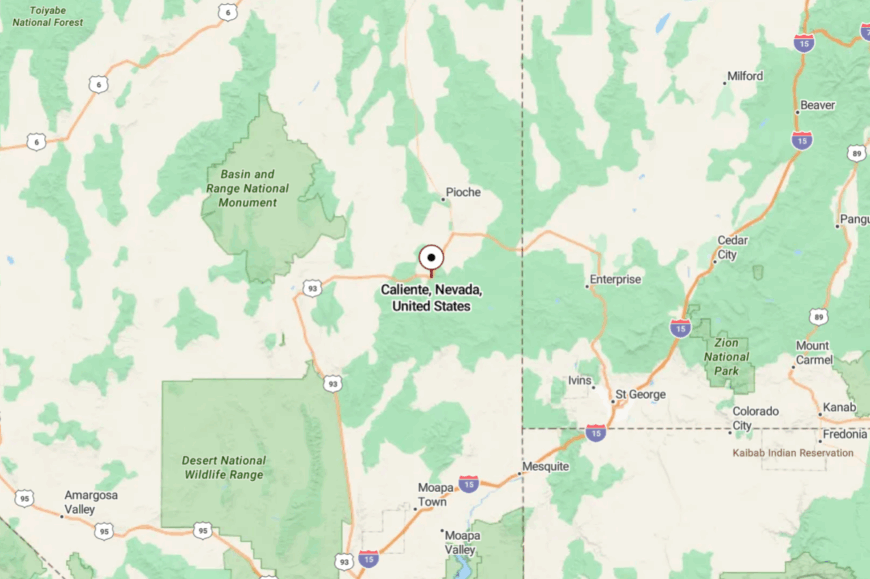
Caliente lies in southeastern Nevada, roughly 150 miles north of Las Vegas along U.S. 93. Rainbow Canyon cuts south from town, shaping the scenic back road to Elgin.
Most folks arrive by the Great Basin Highway and then slow to canyon speed. By the time the depot comes into view, the rest of the world feels two canyons away.
23. Ursine – Eagle Valley’s Shoreline Hamlet
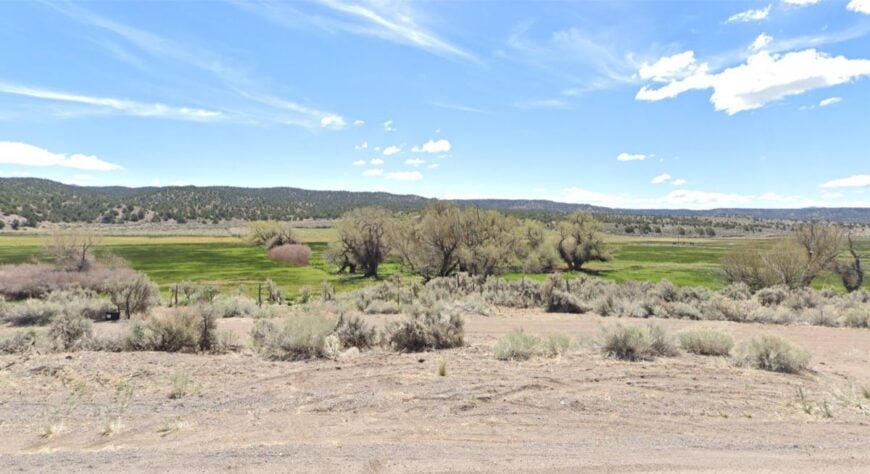
Ursine is a handful of lanes and porches tucked beside the blue of Eagle Valley Reservoir. Seclusion comes easy here—end-of-the-road quiet, with hills shouldering off cell signals and winter snows trimming traffic to locals only.
The vibe is lakeside-simple: kayaks on car roofs, dogs asleep under cottonwoods, and the smell of juniper smoke at dusk. Cast for trout at Spring Valley State Park, picnic under shade shelters, look for owls at daybreak, or day-trip to Echo Canyon State Park up the valley.
A mix of ranching and park work keeps the lights on. If you’re listening for silence, this shoreline knows the tune. Folks fall for the way the wind writes ripples on evening water.
Where is Ursine?
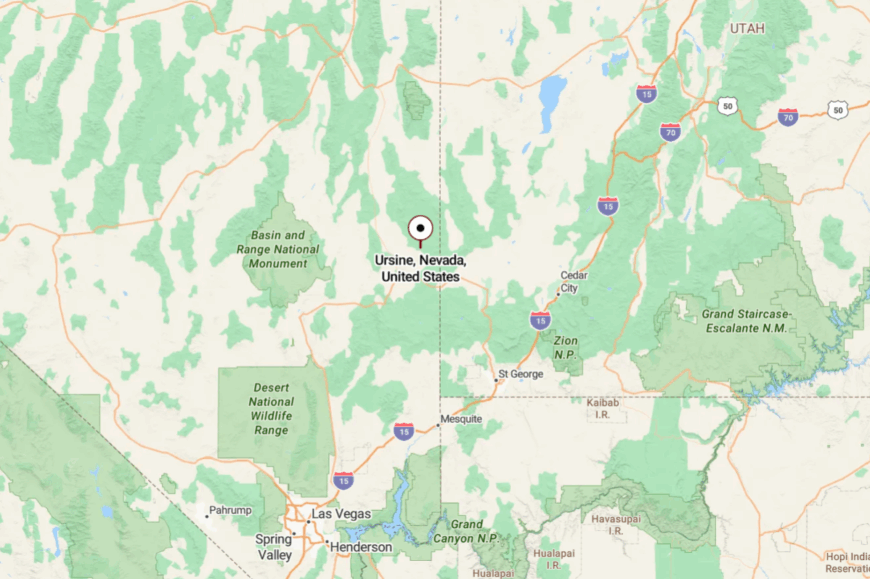
Ursine sits in eastern Lincoln County just below Spring Valley State Park, about 20 miles northeast of Panaca. You reach it by following NV-322 until pavement gives way to slower curves and lake views.
Hills and state land form a natural ring around the community. It’s a small place that feels kept by the water and wind.
22. Ash Springs – Desert Oasis on a Slow Curve

Ash Springs gathers green in the middle of tan—the classic Nevada oasis where warm springs feed cottonwoods and reeds. Its remoteness comes from long distances between towns and the surrounding open range, which keeps the pace gentle.
The feel is traveler’s-stop-turned-hamlet: a quiet market, a roadside coffee, and locals swapping weather notes under shade. Bird along the spring-fed channels, watch dusk fall across Pahranagat Valley, or day-trip to Pahranagat National Wildlife Refuge for reflective water and migrating wings. Ranching and service jobs tie folks to the land and highway in equal measure.
The desert hush here is the kind you carry home. Stay long enough and the silence starts to sound like music.
Where is Ash Springs?
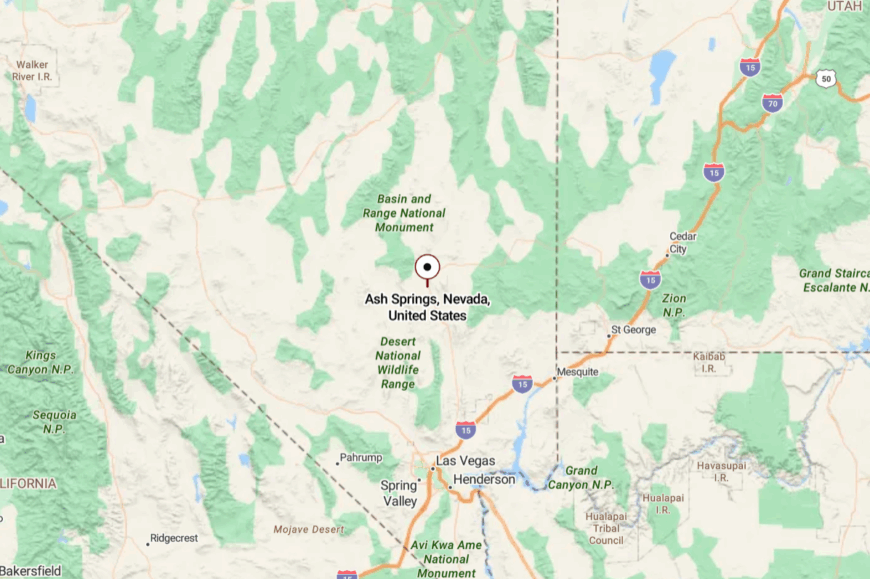
Set on U.S. 93 about 100 miles north of Las Vegas, Ash Springs sits at the southern gateway to Pahranagat Valley. The road arrives straight and bright, then eases past a fringe of green.
Access is simple, but the miles in between do the quieting for you. It’s the kind of stop that turns into a stay.
21. Overton – Muddy River Farm Town
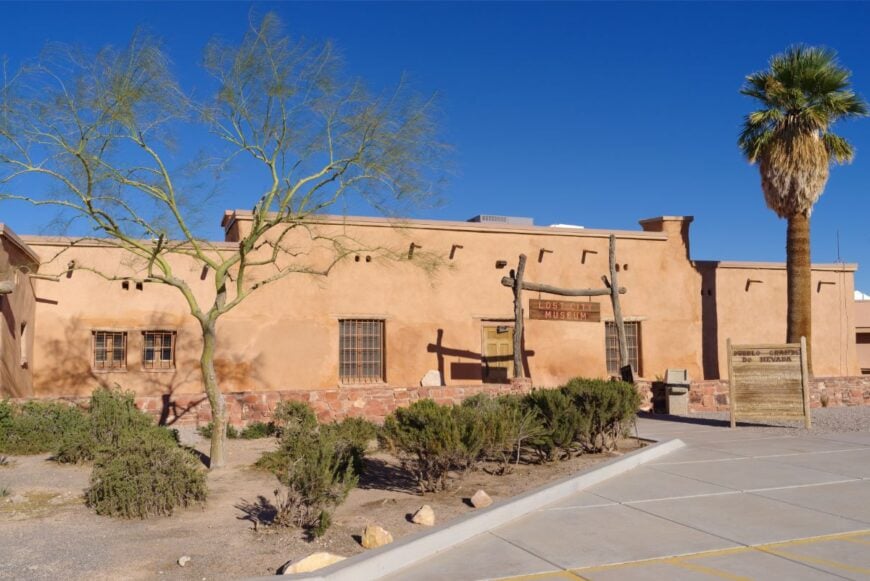
Overton strings along the Muddy River with old shade trees and produce stands that lean into summer. Seclusion comes from sitting off the interstate in a valley of fields, with mesas and federal lands hemming in the view.
The vibe is mellow and sun-washed: tractors, vintage signs, and family cafés serving big breakfasts to bigger smiles. Explore the Lost City Museum, wander the ghostly St. Thomas ruins at low Lake Mead, or slip into Valley of Fire State Park for red-rock arches at sunrise.
Farming and park tourism share the calendar here. Overton is where the Mojave trades hurry for habit. You’ll leave with sand in your shoes and a slower stride.
Where is Overton?
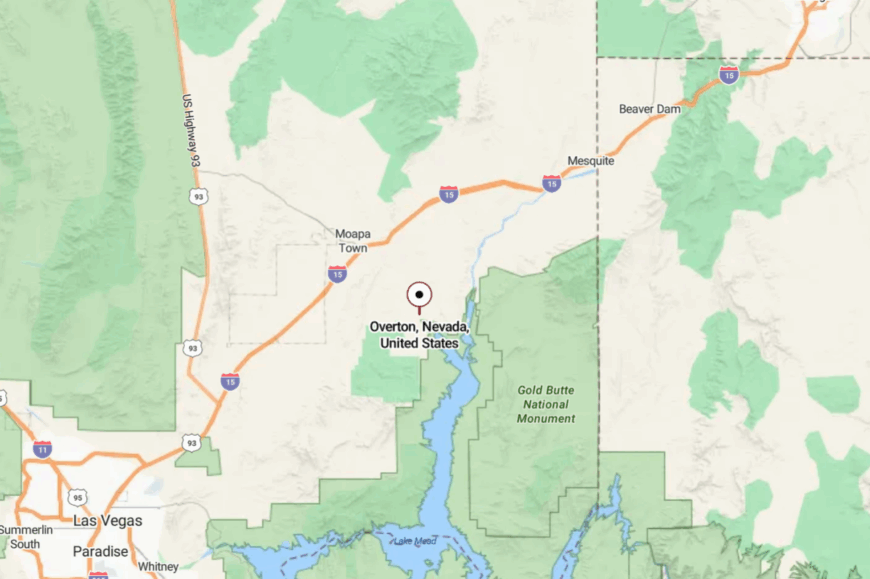
Overton lies in Clark County’s Moapa Valley, about 65 miles northeast of Las Vegas. Most visitors swing off I-15 near Moapa and follow a slower ribbon of road past alfalfa and date palms.
With Lake Mead on one side and the Valley of Fire on the other, shortcuts don’t exist. The valley narrows, and life narrows beautifully with it.
20. Logandale – Red-Rock Backroads and Rodeo Nights
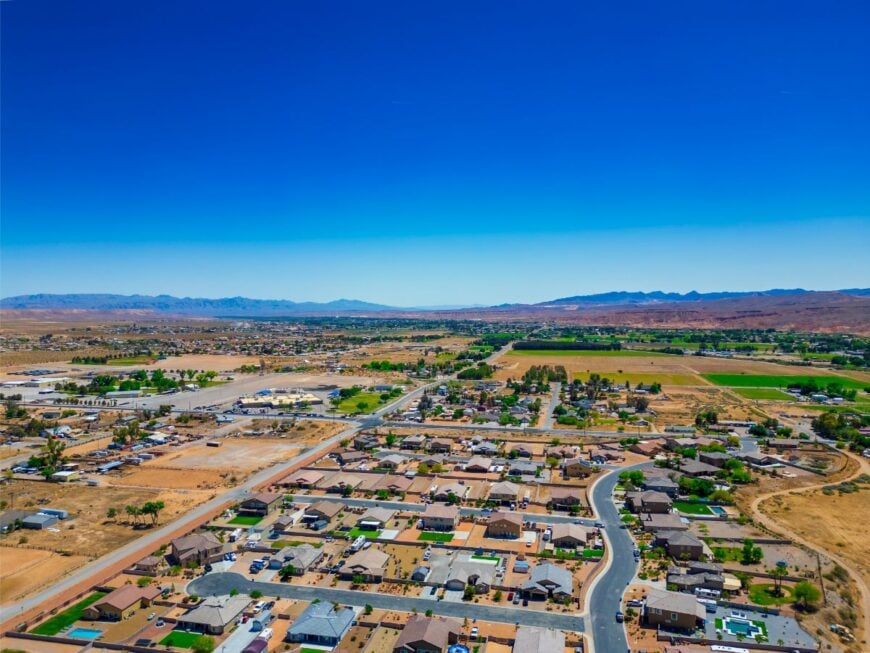
Logandale sits just up the valley from Overton, a patchwork of fields meeting sculpted sandstone. Its tucked-away feel comes from being bypassed by freeway speed and buffered by the Muddy Mountains and BLM lands.
The mood is ranch-casual: fairgrounds buzzing every spring, then months of quiet trail mornings. Ride the Logandale Trails through red canyons, watch broncs at the Clark County Fair & Rodeo, or picnic at nearby Valley of Fire. Agriculture, schools, and small businesses keep the days steady.
In the evening light, the cliffs glow like banked coals, and conversation slows to match. It’s the kind of place where Friday night finds you under arena lights and Saturday morning finds you on a dirt road alone.
Where is Logandale?
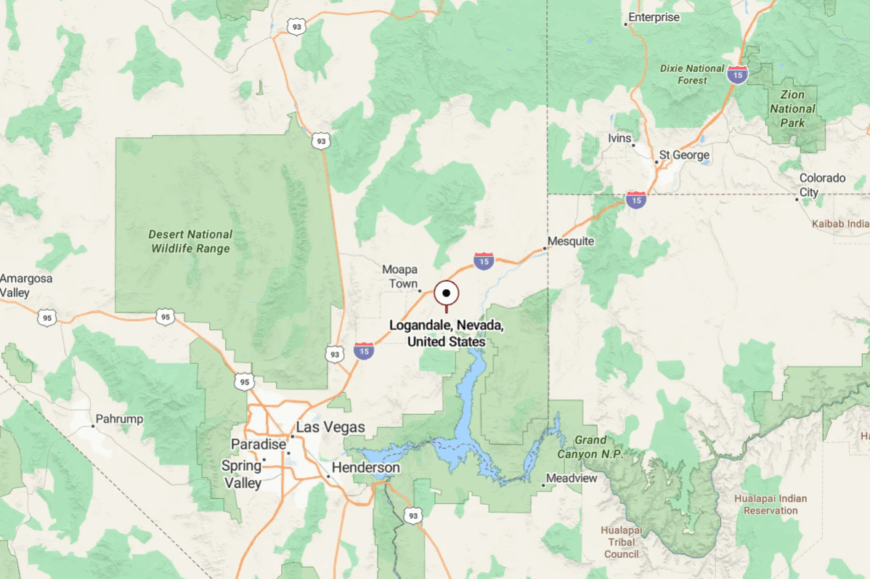
Logandale anchors the upper end of Moapa Valley, roughly an hour northeast of Las Vegas. Leave I-15 and follow NV-169 as it unwinds between mesas and hayfields.
The highway shrinks to a two-lane, and the sky seems to stretch in reply. It’s close to everything wild, far from anything hurried.
19. Glendale – The Quiet Junction

Glendale is the softest kind of dot on the map, a junction hamlet where two big roads meet and then forget you. Seclusion hangs on its smallness: a handful of buildings, a lot of sky, and the hush that settles when trucks slip back to the interstate.
The vibe is desert-utilitarian with a neighborly streak. Use it as a base to explore the Warm Springs Natural Area, cruise the Mormon Mesa, or aim north toward Pahranagat Wildlife Refuge as the sun climbs. A few service jobs support travelers and ranches beyond the pavement.
Blink and you’ll pass it; linger and you’ll understand it. You come for a pit stop and stay for the peace.
Where is Glendale?
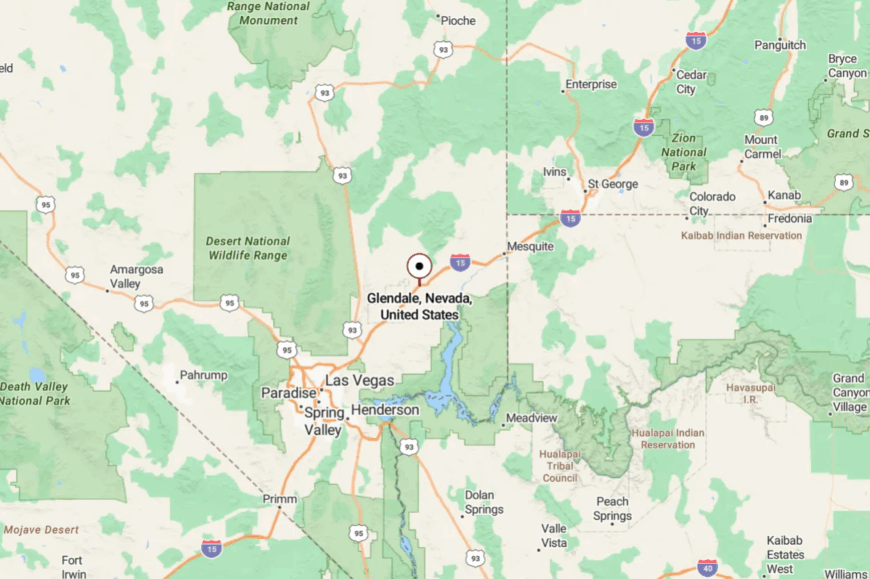
Glendale sits in northeastern Clark County near the split of I-15 and U.S. 93. You reach it in under an hour from Las Vegas, then quickly find yourself in a light-traffic pocket between basins.
From here, two-lane roads lead to big quiet. It’s a crossroads that behaves like a cul-de-sac.
18. Bunkerville – Cottonwoods on the Virgin River

Bunkerville rests under shade trees along the Virgin River, an older settlement that prefers back-porch conversation to storefront flash. Its seclusion persists despite nearby Mesquite because the river bottoms and fields buffer town life from the highway pulse.
The mood is neighborly and unhurried—church suppers, kids on bikes, irrigation water gurgling through summer ditches. Walk the river greenbelt at dawn, photograph historic brick homes, or venture to Gold Butte National Monument for petroglyphs and sculpted sandstone.
Farming and small local services fill most weekdays. If you like your quiet with birdsong, you’ll feel at home fast. It’s the kind of calm that seeps into your shoulders.
Where is Bunkerville?
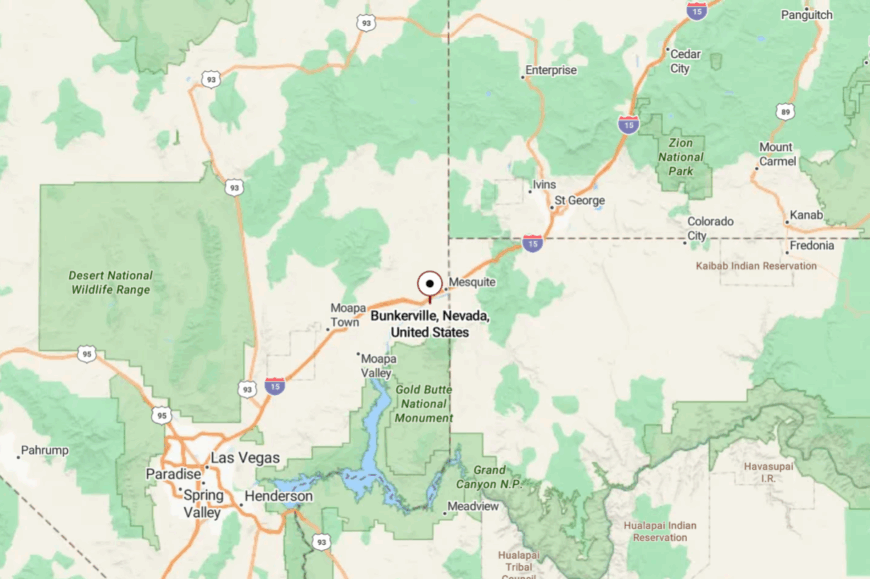
In the far northeast corner of Clark County, Bunkerville sits just south of Mesquite near the Arizona line. Access is via I-15 and a short jog on local roads to the river.
Once there, broad fields and the Virgin’s cottonwoods hush the interstate’s hum. It feels tucked behind a green curtain.
17. Nelson – Eldorado Canyon’s Mining Remnant
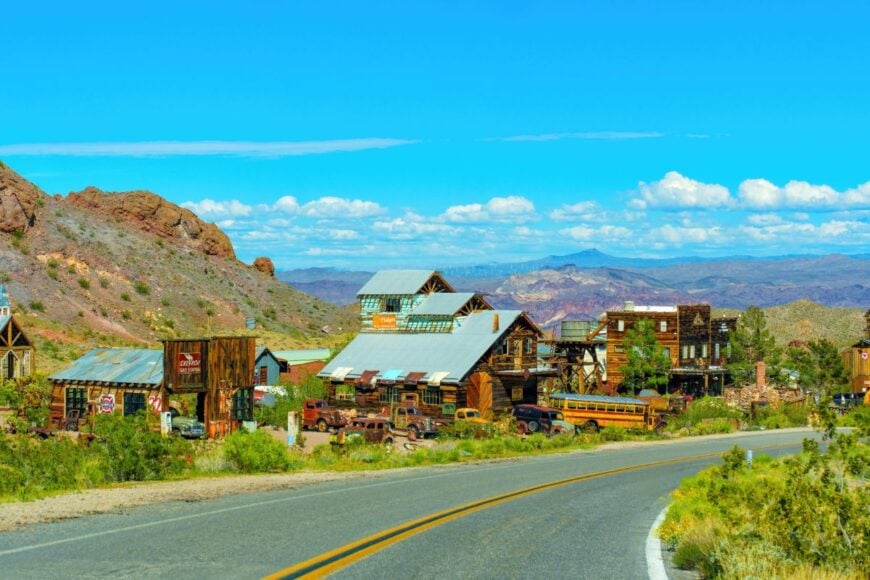
Nelson clings to a desert fold above Eldorado Canyon, a scatter of buildings and mine relics set against pale mountains. Its isolation is geographic and deliberate: a winding road down to the Colorado River and big silence in every direction.
The town vibe is weathered and photogenic—rusted trucks, sun-silvered wood, and a saloon porch that knows stories. Tour the Techatticup Mine, paddle coves at Nelson’s Landing, hunt wildflowers after wet winters, or wander the dry washes at golden hour.
A mix of heritage tourism and guiding keeps the lights on. Out here, you measure time by shadow lines. The desert feels oldest when the wind stops.
Where is Nelson?
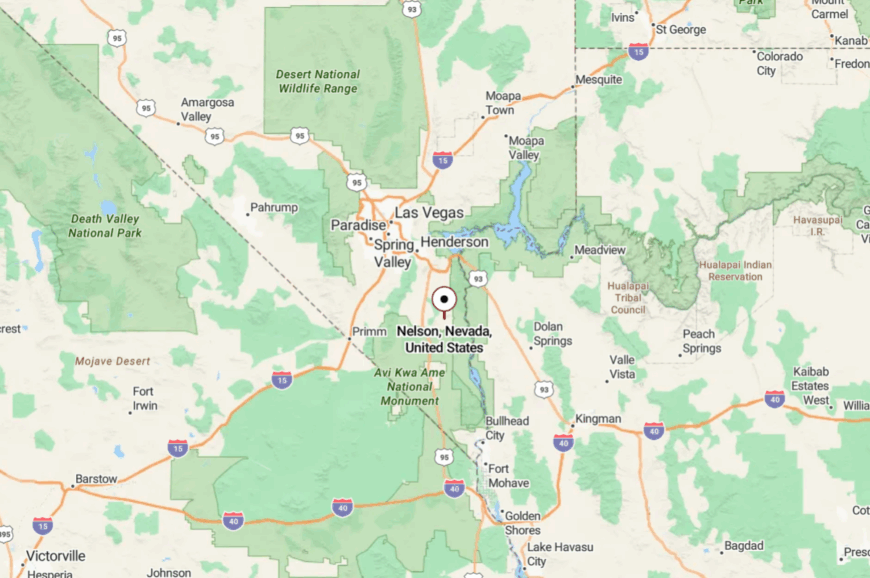
Nelson sits in southern Clark County, about 25 miles southeast of Boulder City via NV-165. The highway curls through badlands before dropping into Eldorado Canyon and the Colorado’s far coves.
With no services between town and the river, the drive itself is part of the quiet. One turn off the main road, and the past feels close.
16. Delamar – “Widowmaker” on the Wind
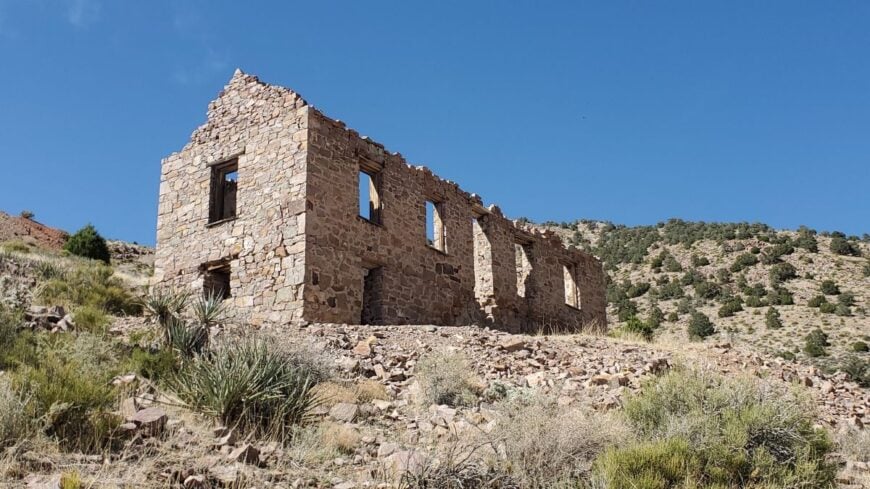
Delamar is a high-desert ghost town scattered across a ridge where stone walls and smelter ruins stare out over empty miles. Seclusion here is absolute—rough dirt access, no water, and wind for company.
The feeling is eerie and beautiful: sun-bleached timbers, carved lettering on mine headframes, and lizards skittering across the old main street. Come with a capable vehicle to explore foundations, sift tailings for colorful rock, and stargaze in some of the darkest skies around.
Once a gold center, now it’s a museum without walls. Standing in the hush, you’ll hear history more than you’ll see it. The echo outlasts your footsteps.
Where is Delamar?

Delamar lies in Lincoln County’s Delamar Valley, reached by dirt roads west of U.S. 93 between Caliente and Alamo. There are no services, and the last miles slow to washboard and rock.
Maps mark the ruins, but the land makes you earn them. When the wind drops, the silence is complete.
15. St. Thomas – Lake Mead’s Returning Ruins
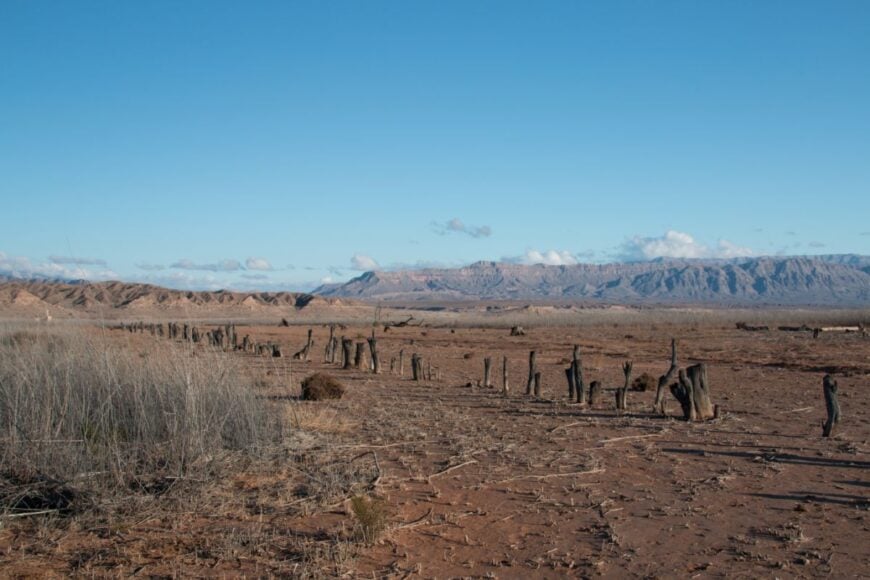
St. Thomas is a drowned town that resurfaced—stone outlines and stairways emerging as Lake Mead receded. Its seclusion is both watery and geographic: a long dirt approach and a shoreline that keeps casual visitors away.
The mood is contemplative; you walk through foundations as if turning pages. Explore the old streets at golden hour, read interpretive signs, watch for egrets along the backwaters, and picnic under mesquite.
Tourism here is reflective more than lively—history and lake light doing the heavy lifting. It’s quiet enough to hear your footfalls. You leave speaking in whispers.
Where is St. Thomas?
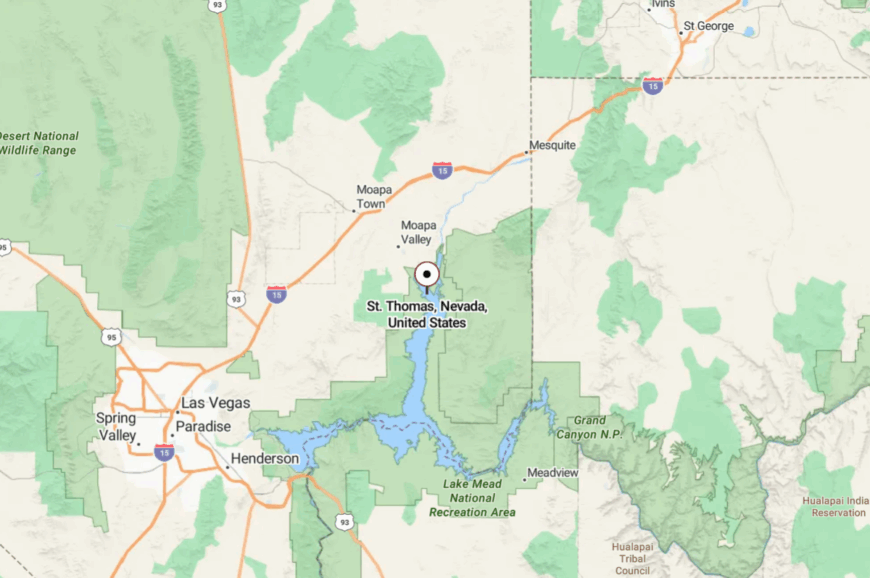
St. Thomas sits at the north end of Lake Mead near Overton, accessible by a graded spur off Northshore Road. The nearest city is Las Vegas, roughly 70 miles southwest, but the last miles are slow and sun-soaked.
The ghost town rests where the Muddy River meets the lake’s edge. By the time you step onto the old main street, modern life feels miles offshore.
14. Elgin – Schoolhouse in the Cottonwoods
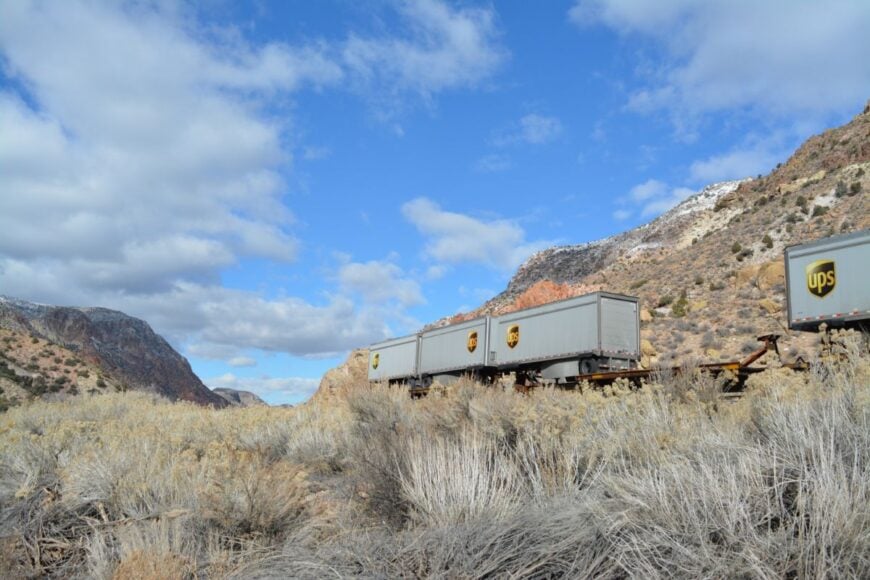
Elgin is a ghost hamlet folded into a green seam of Rainbow Canyon, remembered for its one-room schoolhouse and railside orchards. Seclusion is guaranteed by a narrow canyon road and seasonal washouts that keep traffic light.
The vibe is tender and archival—painted desks, creaking floors, and cottonwood shade. Visit the Elgin Schoolhouse State Historic Site, watch trains thread the canyon, look for bighorn on the cliffs, or follow the Meadow Valley Wash for birding.
History and geology share the stage here. It’s the sort of place that makes a whisper feel loud. You’ll find yourself tiptoeing without quite knowing why.
Where is Elgin?
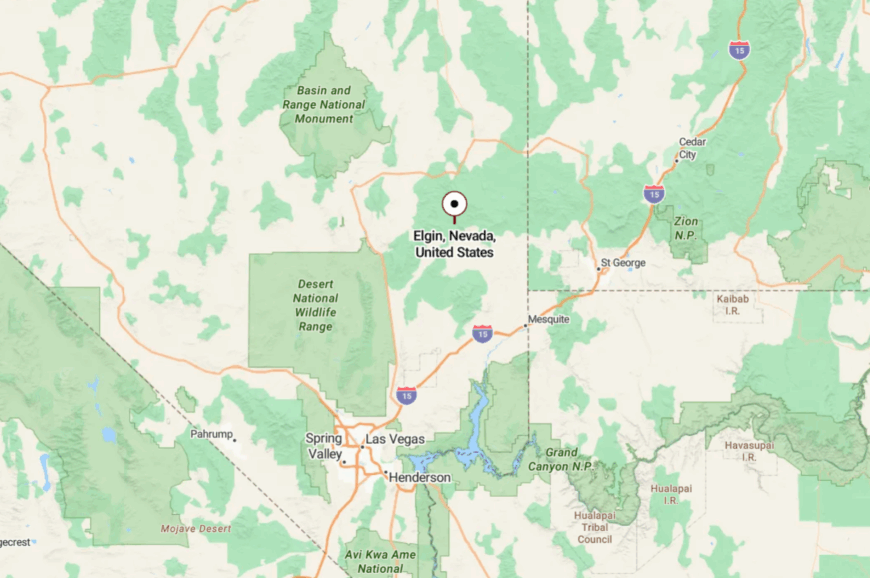
Elgin sits between Caliente and Carp along NV-317 in Lincoln County’s Rainbow Canyon. The approach narrows to a ribbon between red walls and green riverbank.
Cell service fades as the canyon deepens, which suits the mood. The old schoolhouse is small, but the quiet around it is big.
13. Acoma – Meadow Valley Wash Outpost
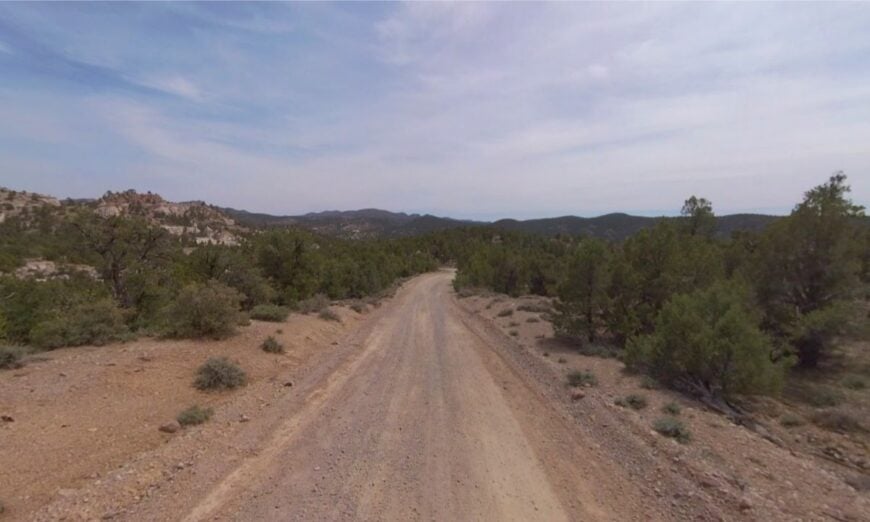
Acoma is little more than a cluster of roofs and windbreaks along the wash—a true outpost with room for the sky. Seclusion stems from distance and from the fact that travelers tend to blink past it on U.S. 93.
The vibe is ranch-practical and unadorned: windmills creak, dogs nap in the shade, and pickups raise dust on side roads. Walk the wash in the cool hours, glass the hills for antelope, or loop to Kershaw-Ryan State Park for a green break under canyon walls.
Work here is land-bound—ranching, fencing, hauling. If you measure places by peace, Acoma tallies high. The horizon becomes your companion.
Where is Acoma?
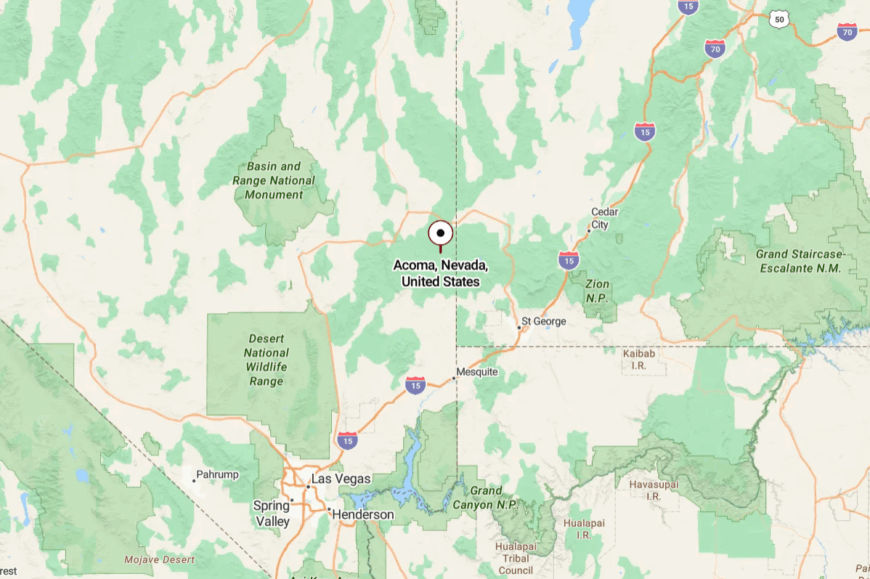
Set just south of Caliente in Lincoln County, Acoma edges the Meadow Valley corridor along U.S. 93. You reach it in minutes from town, then quickly trade storefronts for sagebrush.
Side roads narrow to gravel and then to two-track. Keep going until the only sound is wind.
12. Carp – Rail Siding to Nowhere
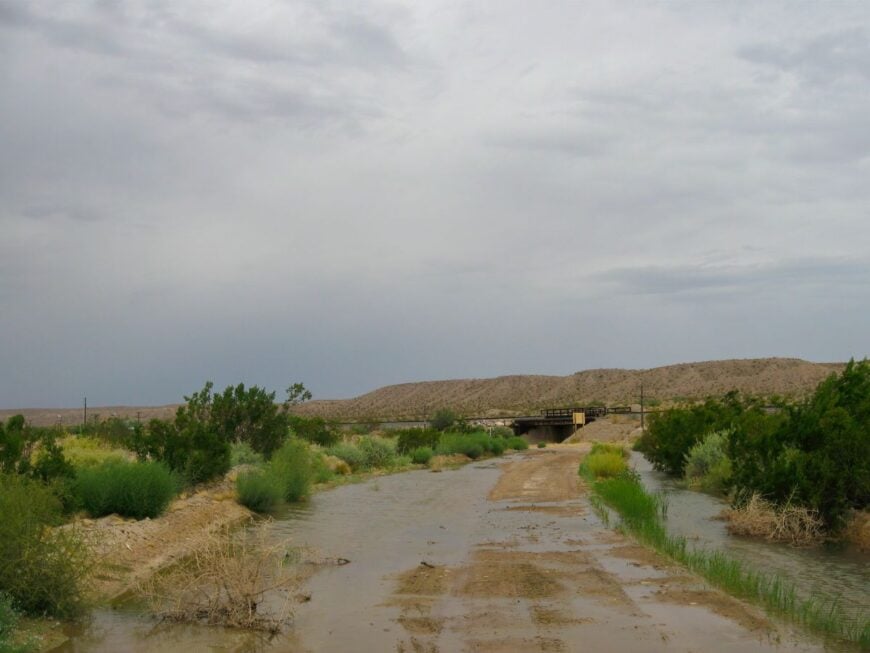
Carp is an old rail stop gone quiet, the kind of place where a lone sign and a line of cottonwoods hold the story together. Its isolation is complete—no services, long gaps between vehicles, and the Meadow Valley Wash for company.
The feeling is cinematic and spare: rails, sky, and the sense of being pleasantly misplaced. Watch for raptors along the cottonwoods, pick your way across foundations, then follow the canyon to see how water threads the desert.
Work left with the trains; what remains is space. Carp proves how beautiful almost-nothing can be. It’s a hymn to the open country.
Where is Carp?
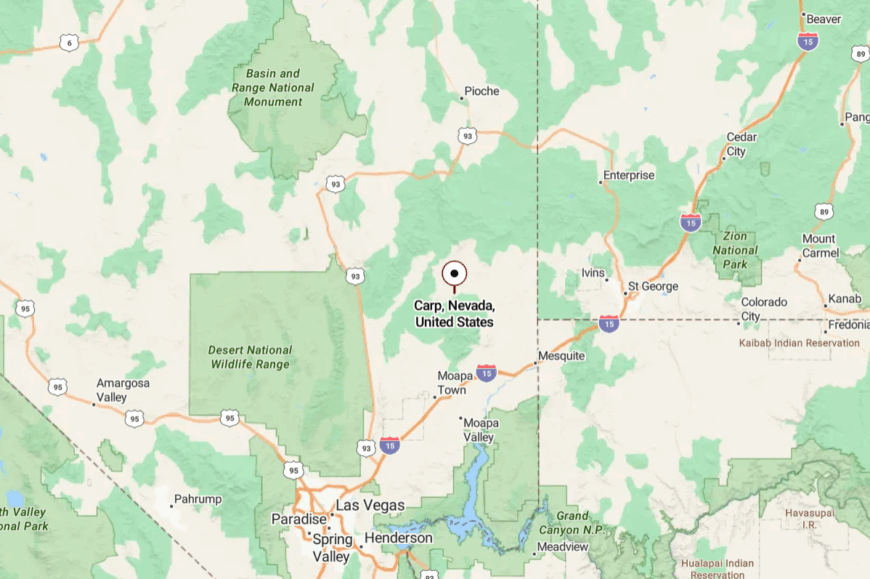
Carp lies about 35 miles south of Caliente along the Meadow Valley Wash. It’s reached by a mix of paved and graded roads that shadow the tracks before easing into the cottonwoods.
With no shops or houses to speak of, you bring what you need. The quiet arrives first and leaves last.
11. Palm Gardens – Junction on the Empty Edge
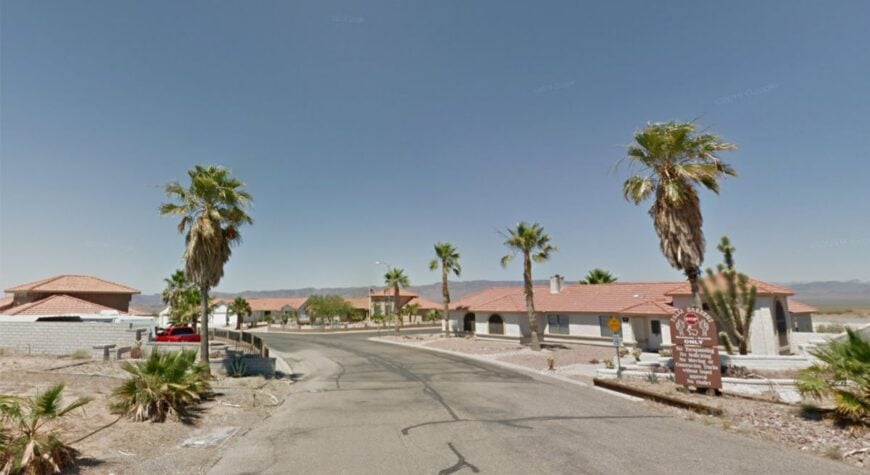
Palm Gardens is a tiny planned community perched where the Mojave slides toward the Colorado River country. Its seclusion comes from being miles from any big town and from the sere, beautiful flats that surround it.
The vibe is minimalist desert living—big skies, simple structures, and nights that glitter without a single streetlamp. Use it as a launch point for Spirit Mountain Wilderness hikes, Lake Mohave coves, or sunrise drives toward Laughlin.
A few residents commute; the rest lean into desert rhythm. It’s a good place to remember how to breathe. The stillness here feels like permission.
Where is Palm Gardens?
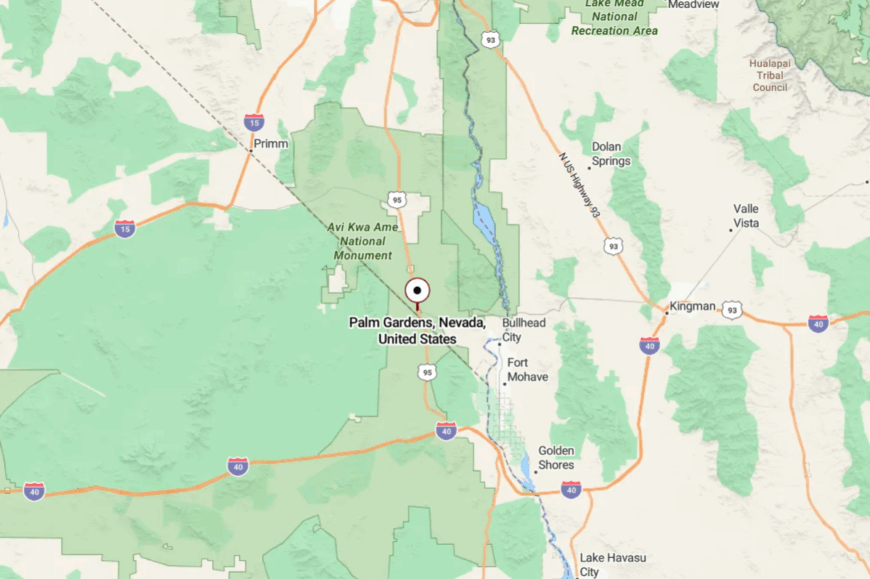
In southern Clark County, Palm Gardens sits along U.S. 95 near the junction with NV-163, about 70 miles from Las Vegas. The last stretch is an easy highway, but the scenery grows emptier with every mile.
Services are sparse, so the horizon does the talking. It’s close enough to reach, far enough to feel like you’ve left everything behind.
10. Alamo: Serenity in the Heart of Pahranagat Valley
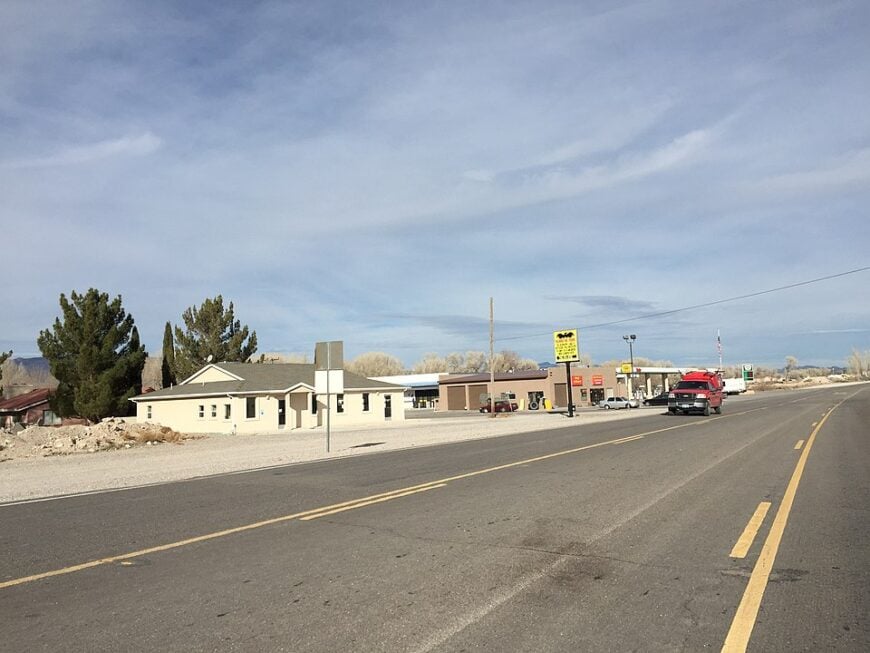
Alamo is a peaceful town with a population of about 1,000 people, nestled in the lush Pahranagat Valley. This oasis in the desert offers outdoor activities like bird watching, fishing, and hiking around the nearby Pahranagat National Wildlife Refuge.
The main industries here are agriculture and ranching, contributing to the town’s serene rural atmosphere. What makes Alamo so secluded is its remote location, surrounded by vast desert landscapes and far from bustling cities.
The quiet streets and friendly community make it an ideal spot for those seeking tranquility and a close connection with nature.
Where is Alamo?
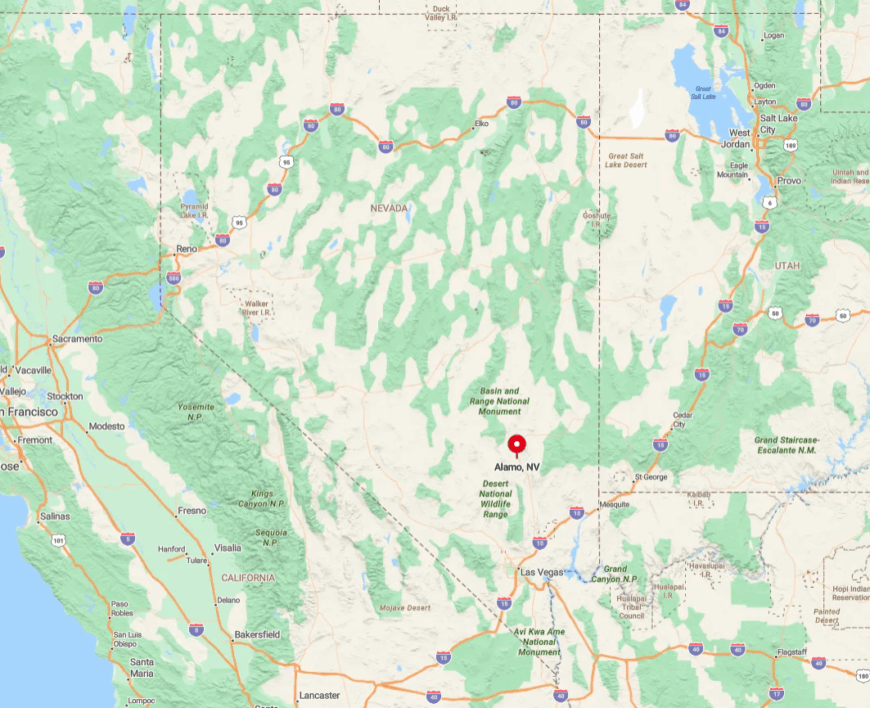
Located about 90 miles north of Las Vegas along U.S. Route 93, Alamo sits in Lincoln County in Southeast Nevada. Its seclusion comes from the expansive desert that separates it from larger urban areas, giving it a sense of isolation and calm.
The town is accessible by car via the Great Basin Highway, but the journey takes you through miles of open desert, reinforcing the feeling of remoteness. The scenic drive itself is part of the charm, offering stunning views of Nevada’s rugged landscape before arriving in this quiet haven.
9. Sandy Valley: Where Wide Open Spaces Meet Tranquility
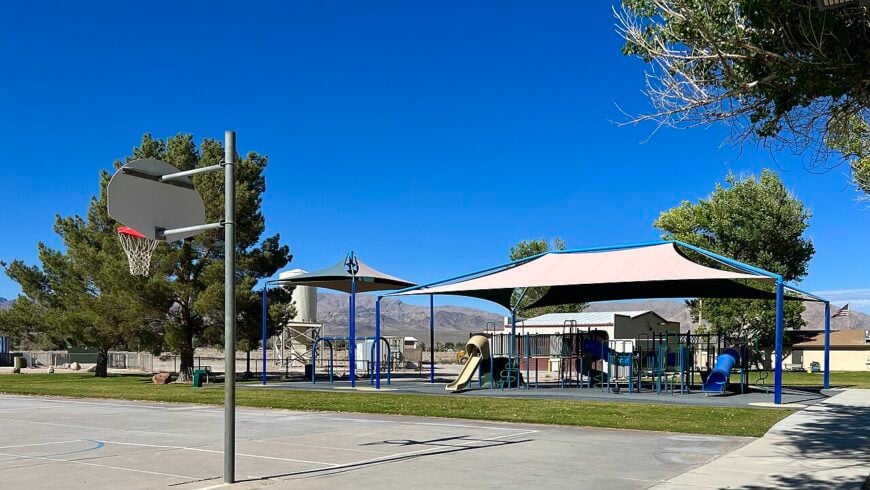
Sandy Valley is a rural community with around 2,000 residents, offering expansive open spaces and a peaceful way of life. The town provides a retreat from urban noise, surrounded by vast desert plains and mountain views.
Residents enjoy horseback riding, ATV trails, and stargazing under the clear night skies. There isn’t much industry here, which contributes to its quiet atmosphere, though some locals work in agriculture or commute to Las Vegas for work.
What makes Sandy Valley secluded is its distance from major highways and the absence of commercial development, creating a tranquil environment perfect for relaxation.
Where is Sandy Valley?
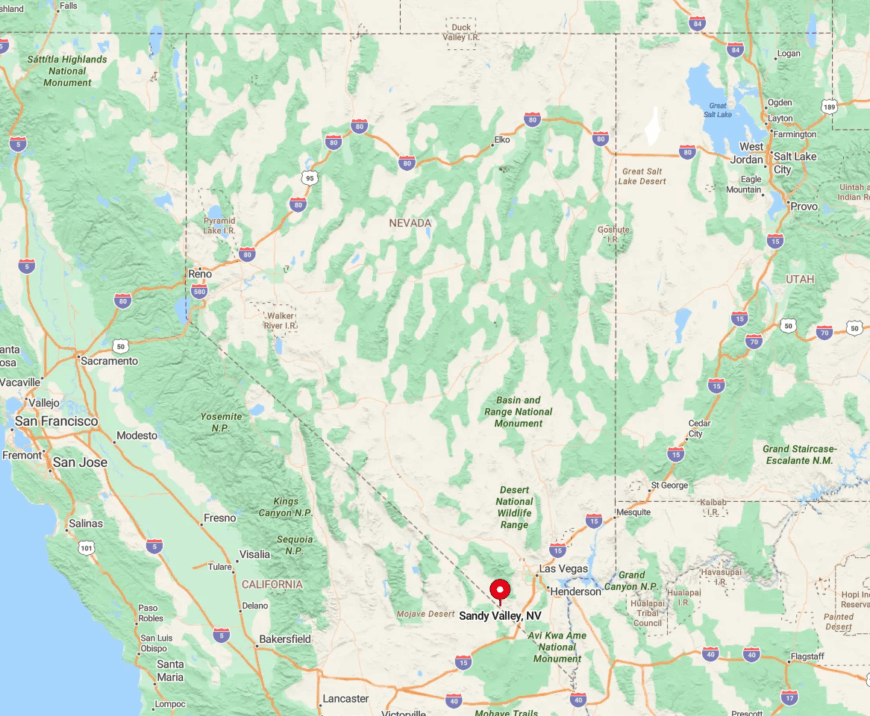
Situated about 45 miles southwest of Las Vegas, Sandy Valley is tucked away near the border of Nevada and California. Its seclusion is enhanced by the surrounding mountains and desert, which act as natural barriers from the hustle of city life.
To get there, take State Route 160 and then head south on Sandy Valley Road, a route that winds through scenic landscapes. The journey itself reinforces the town’s remote feel, making it a hidden gem for those in search of solitude.
8. Coyote Springs: Embracing the Open Desert
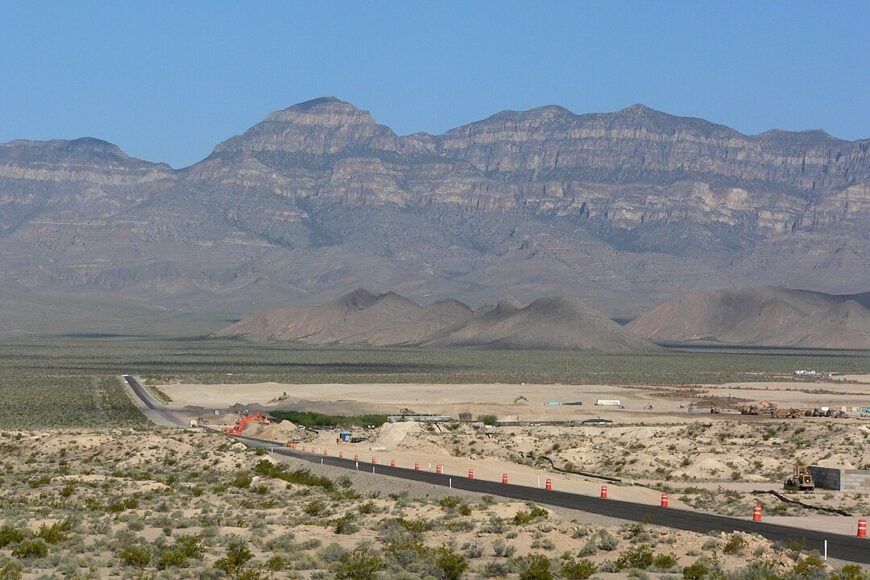
Coyote Springs is an unincorporated community with a very small population, often considered one of Nevada’s most undeveloped areas. The vast expanses of open desert are truly captivating, offering unparalleled privacy and a deep connection with nature.
There aren’t many activities here yet, but the area is known for the Coyote Springs Golf Club, a hidden gem for golf enthusiasts seeking a secluded experience.
With virtually no main industries and minimal development, what makes Coyote Springs secluded is its untouched landscape and the silence that comes with it. It’s a place where you can truly disconnect and immerse yourself in the desert’s tranquility.
Where is Coyote Springs?
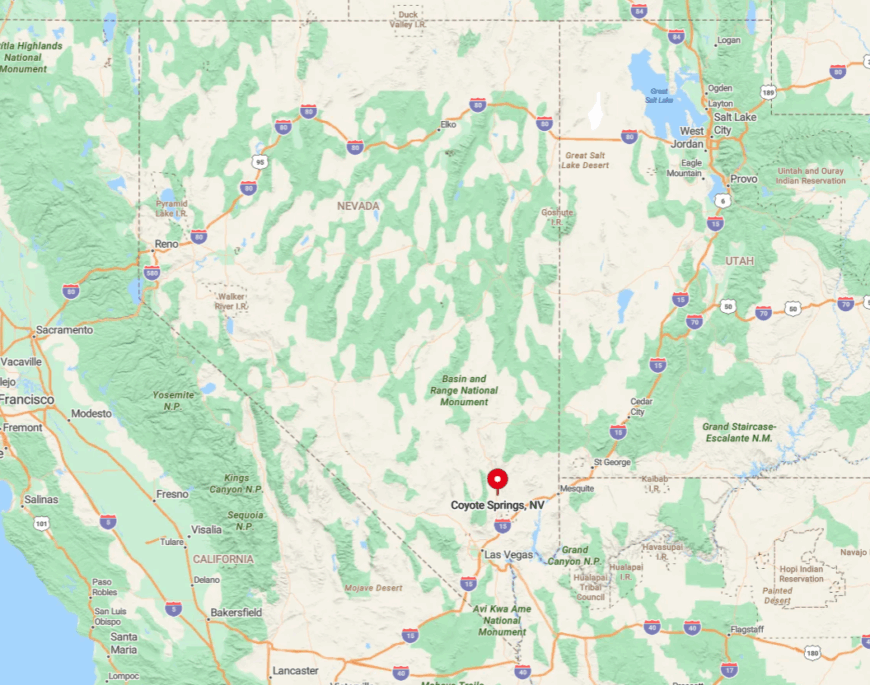
Located about 60 miles north of Las Vegas along U.S. Route 93, Coyote Springs spans across both Clark and Lincoln counties. The extensive stretches of undeveloped land contribute to its sense of isolation and serenity.
Getting there involves a straightforward drive through the desert emphasizing the remoteness of the destination. The lack of commercial amenities means it’s just you and the natural surroundings, which is perfect for anyone seeking an escape from the modern world.
7. Crystal Springs: Nature’s Secluded Retreat
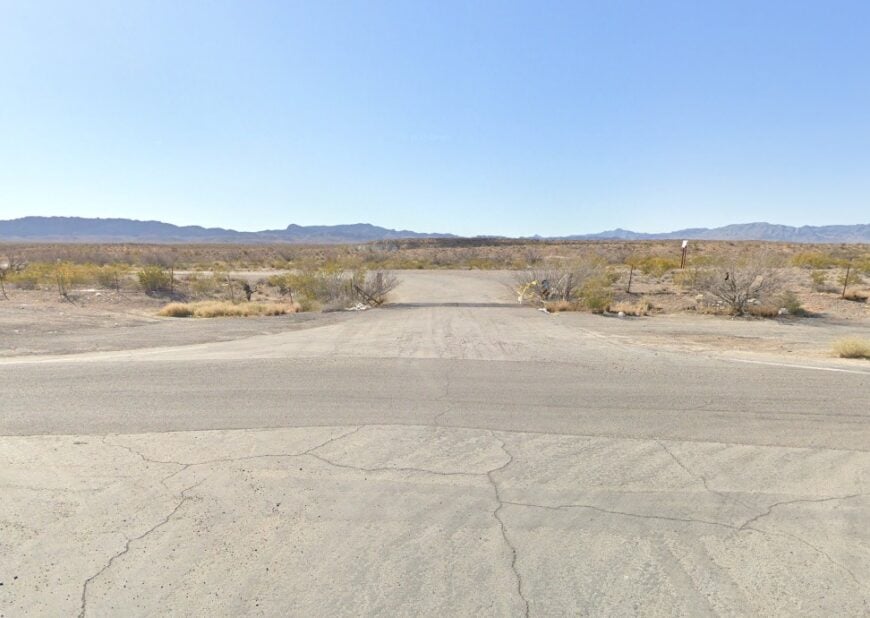
Crystal Springs is a tiny community known for its lush springs that provide a stark contrast to the surrounding desert.
The main attractions include exploring the nearby Ash Springs and enjoying the unique flora and fauna sustained by the water sources.
There isn’t much in the way of industry, aside from small-scale agriculture supported by the springs. What makes Crystal Springs secluded is its remote location and the hidden nature of its springs amid the arid landscape.
Where is Crystal Springs?
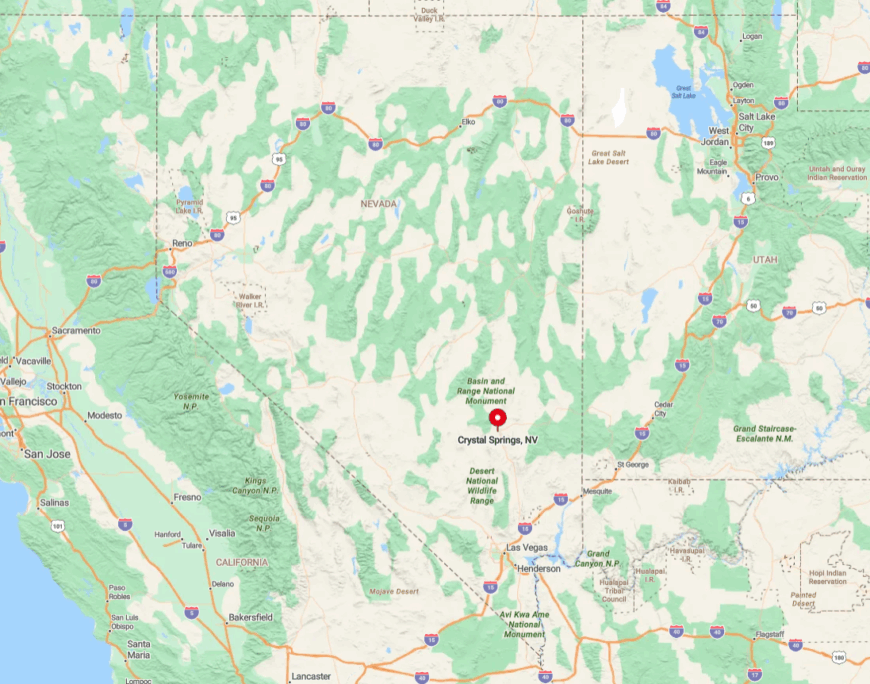
Nestled in Lincoln County along U.S. Route 93, Crystal Springs is located about 5 miles north of Hiko. Its seclusion is heightened by the vast desert that surrounds it and the absence of major urban centers nearby.
To get there, travel along the Great Basin Highway, and just as the desert seems endless, the springs appear like a hidden treasure. The journey through open landscapes reinforces the town’s isolated charm, making it a perfect getaway for those seeking peace and natural beauty.
6. Cal-Nev-Ari: Small Town Charm at the Crossroads
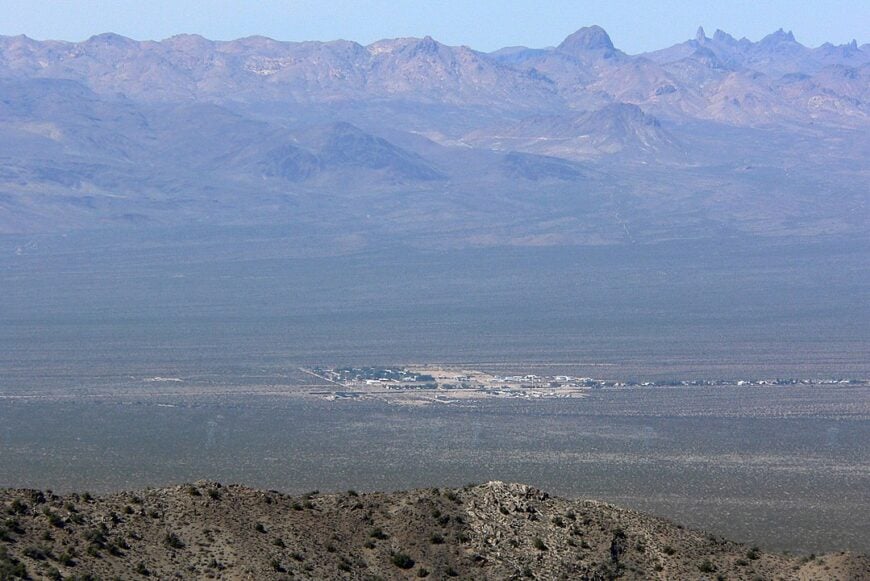
Cal-Nev-Ari is a small community with a population of around 350 people, offering a unique blend of aviation history and desert living. The town’s airstrip is fascinating as it attracts aviation enthusiasts.
Activities include visiting the local casino and exploring nearby hiking trails. The main industry revolves around aviation and tourism, but the town remains quiet and uncrowded.
What makes Cal-Nev-Ari secluded is its remote location at the intersection of major highways but still miles away from bustling cities, giving it a blend of accessibility and solitude.
Where is Cal-Nev-Ari?

Located in the southernmost part of Nevada along U.S. Route 95, Cal-Nev-Ari sits about 70 miles south of Las Vegas. Its seclusion stems from the surrounding desert and the sparse population in this part of the state.
To reach the town, drive through expansive desert scenery, reinforcing the feeling of remoteness. Despite its position at a crossroads, the town remains a quiet enclave, making it an ideal spot for those seeking a peaceful retreat with a touch of small-town friendliness.
5. Goodsprings: Hidden Heritage Beyond the City
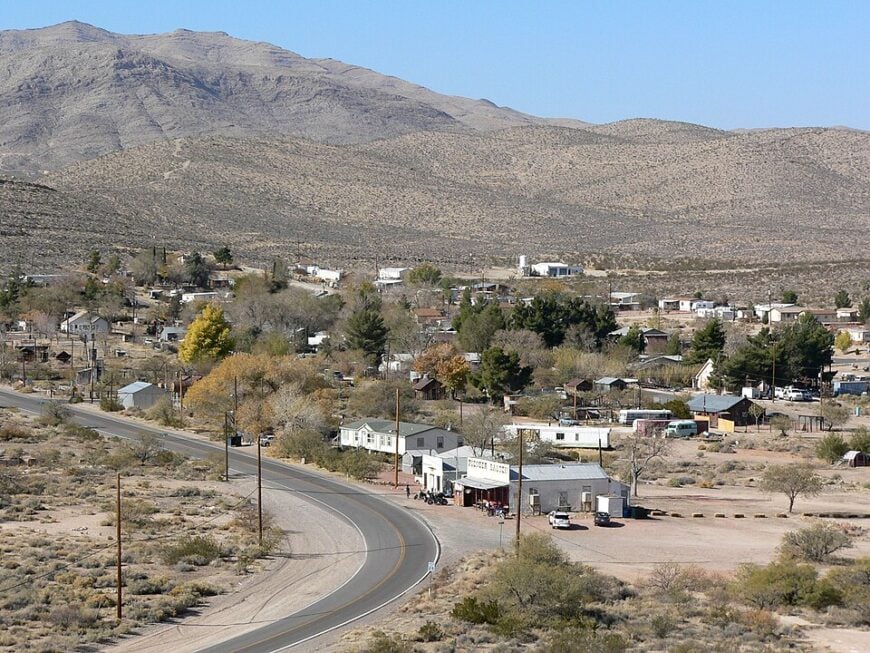
Goodsprings is a historic mining town with a population of around 200 people. It has a rich heritage, with landmarks like the Pioneer Saloon offering a glimpse into the past. Activities include exploring old mines, hiking in the surrounding hills, and immersing oneself in the town’s Wild West atmosphere.
The main industry used to be mining, but now it’s largely tourism related to its history. What makes Goodsprings secluded is its location off the main highways and the preservation of its rustic charm, far removed from the modern developments of nearby cities.
Where is Goodsprings?
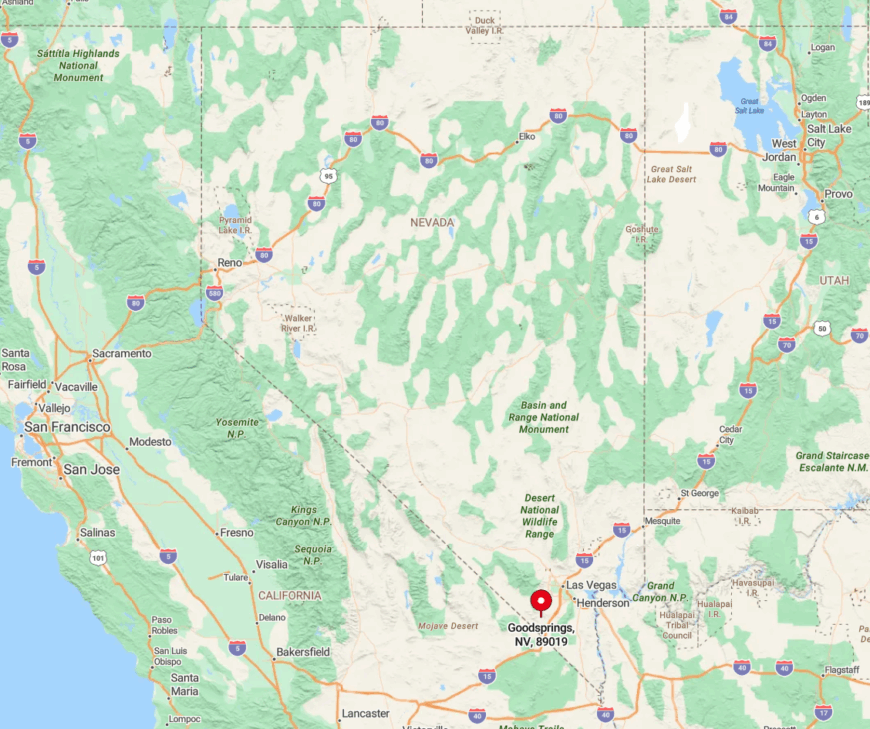
Situated about 40 miles southwest of Las Vegas, Goodsprings is accessed via State Route 161. Its seclusion is enhanced by the Mojave Desert landscape that envelops it, creating a buffer from urban sprawl.
Getting there involves a drive through open desert roads, which adds to the anticipation of stepping back in time. The town’s hidden location makes it a peaceful escape for those interested in history and solitude.
4. Hiko: Oasis of Calm in Lincoln County
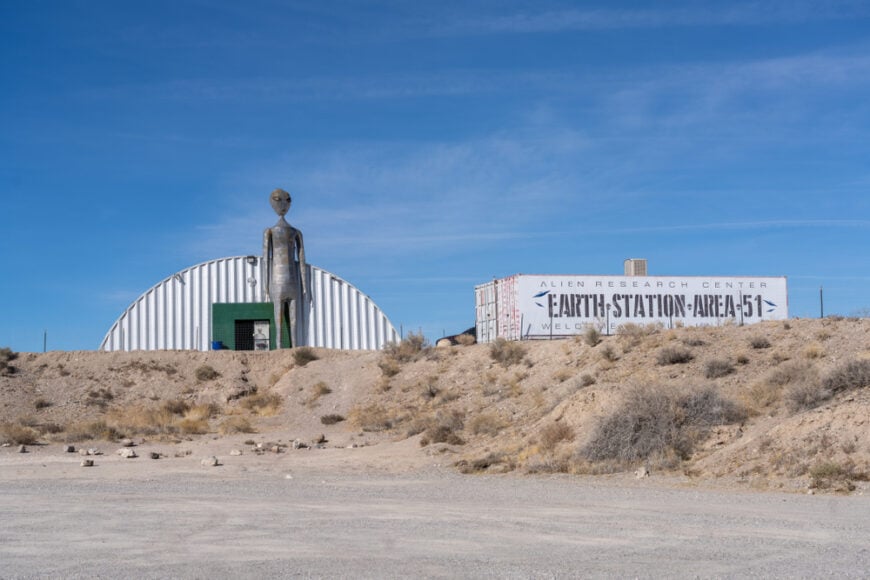
Hiko is a small community with a population of just over 100 people, known for its tranquil environment and sparse development. Activities include exploring nearby petroglyph sites and enjoying the quiet rural surroundings.
With agriculture as the main industry, the lack of commercial development adds to its secluded nature. What makes Hiko stand out is its peaceful ambiance amid Nevada’s rolling desert hills, making it an ideal retreat for relaxation.
Where is Hiko?
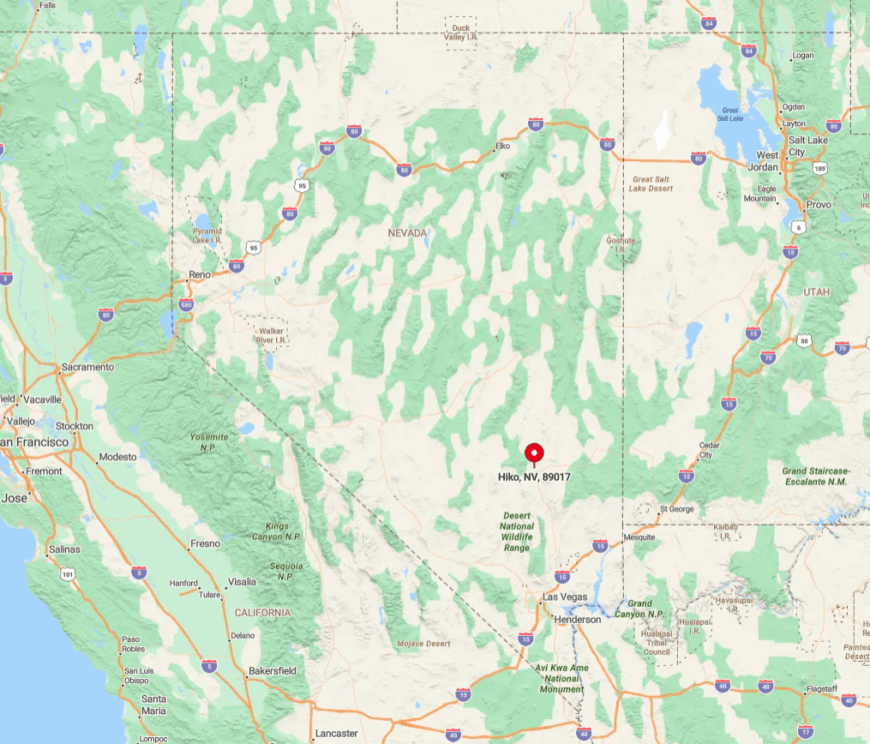
Located along U.S. Route 93 in Lincoln County, Hiko is about 100 miles north of Las Vegas. Its seclusion is due to the vast distances between towns in this part of Nevada and the surrounding desert terrain.
To reach Hiko, drive along the Great Basin Highway, witnessing miles of open land that underscore the town’s isolation. The journey through remote landscapes emphasizes its status as a hidden gem away from the hustle and bustle.
3. Pioche: Stepping Back into the Wild West
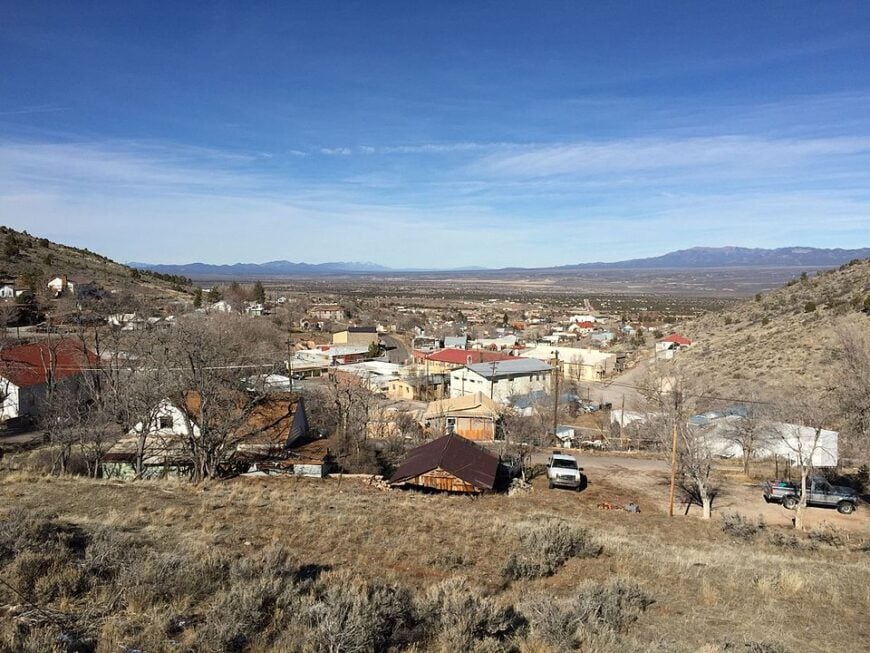
Pioche is a historic mining town with a population of around 900 people. You will enjoy wandering its quiet streets lined with 19th-century buildings that evoke the Wild West era. Activities include visiting the old courthouse, exploring abandoned mines, and hiking in the nearby Echo Canyon State Park.
The main industries were mining and now tourism centered around its rich history. What makes Pioche secluded is its mountain locale and the untouched landscapes that surround it, far from urban centers and modern distractions.
Where is Pioche?

Situated in Lincoln County along U.S. Route 93, Pioche is about 180 miles northeast of Las Vegas. The town’s elevation of over 6,000 feet adds to its isolation, nestled among the mountains.
To get there, traverse winding roads that ascend into the high desert, enhancing the sensation of stepping back in time. The remote setting and historical ambiance make Pioche a perfect destination for those seeking seclusion and a taste of Nevada’s past.
2. Rachel: The Tiny Town Near Area 51
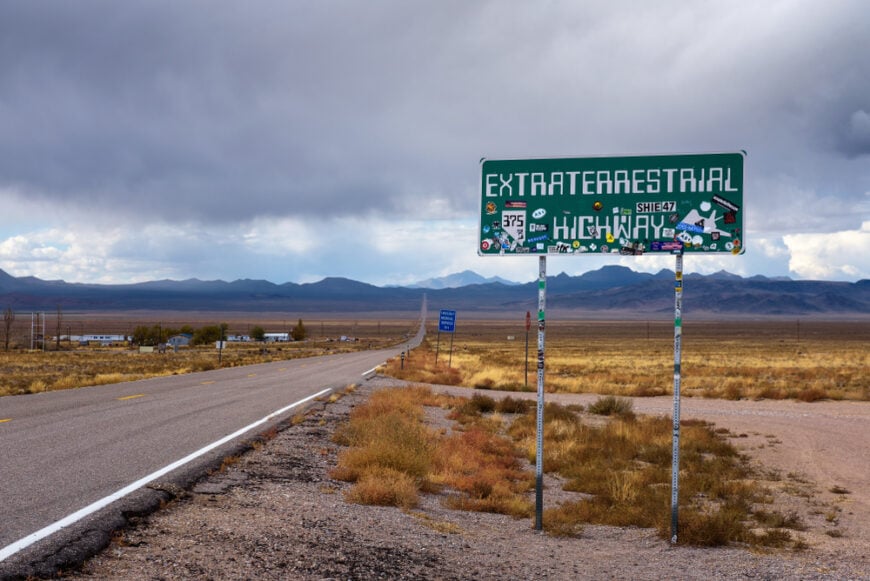
Rachel is a tiny town with a population of around 50 people, known as the closest habitation to the mysterious Area 51.
You will be fascinated by its unique allure, offering opportunities for UFO enthusiasts to explore the Area 51 lore and stargazing under minimal light pollution. The Little A’Le’Inn, a quirky diner and motel, serves as a hub for visitors intrigued by extraterrestrial stories.
With few industries beyond tourism related to the area’s mystery, what makes Rachel secluded is its remote desert location and the surrounding vastness of the Nevada desert. The tight-knit community adds to its charm, making you feel like a part of something special.
Where is Rachel?
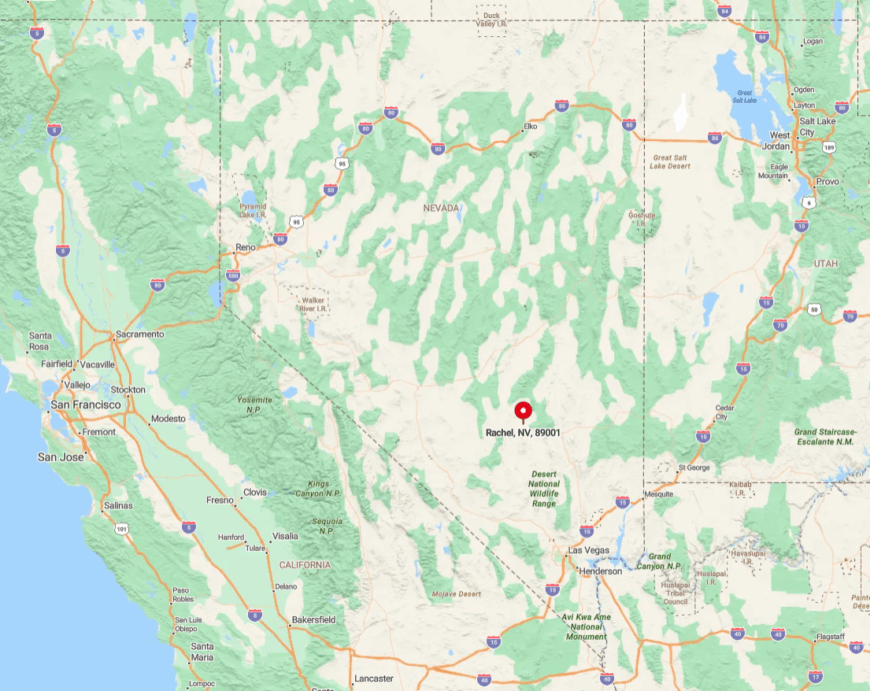
Rachel is located along Nevada State Route 375, famously known as the Extraterrestrial Highway, in Lincoln County. Its seclusion is intensified by miles of desert terrain that separate it from larger towns and cities.
To get there, drive for hours through the open desert, which strengthens the feeling of isolation and builds anticipation. The journey is part of the experience, highlighting why Rachel is a perfect spot for those seeking solitude and a touch of otherworldly intrigue.
1. Searchlight: A Desert Haven Away from It All

Searchlight is a small town with a population of about 500 people, set amidst the Mojave Desert’s expansive landscapes. Its peaceful ambiance offers activities like gold mining tours, exploring historical sites, and hiking in the rugged desert terrain.
The main industries include mining and a bit of tourism, but the town remains quiet and uncrowded. What makes Searchlight secluded is its remote location and the vast open spaces that surround it, providing a sense of solitude and escape from the fast-paced world.
Where is Searchlight?
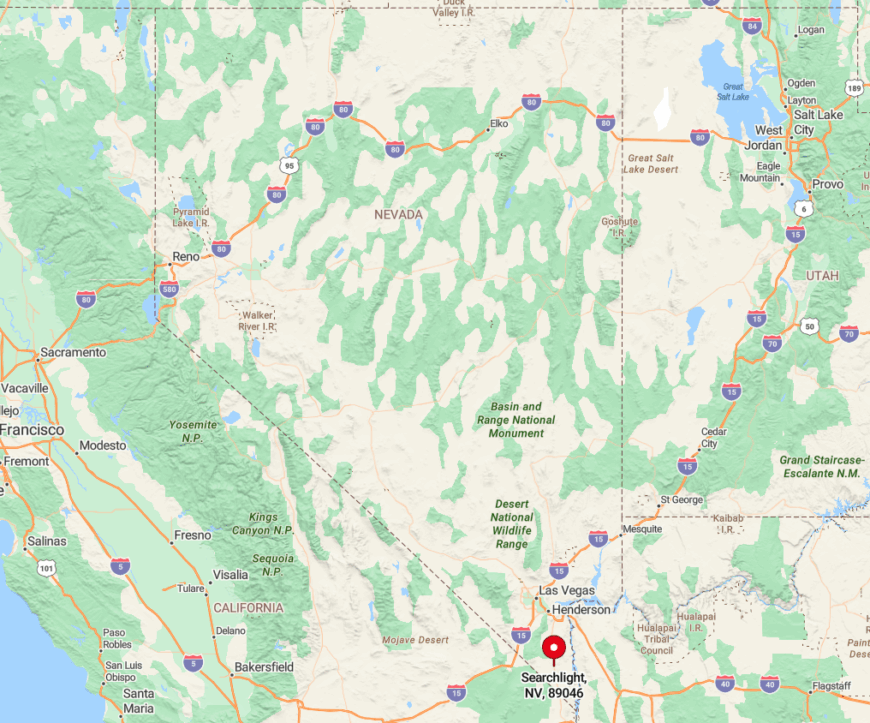
Located roughly halfway between Las Vegas and Laughlin along U.S. Route 95, Searchlight sits in Clark County. Its seclusion is a result of the desert that envelops it and its position away from major urban areas.
To reach Searchlight, drive through wide stretches of desert roads, enjoying the stark beauty of the Mojave. The town’s isolation makes it a haven for those seeking peace, quiet, and a deep connection with the desert environment.






